South Africa - on safari "28:47.66S 32:04.76E"

VulcanSpirit
Richard & Alison Brunstrom
Wed 4 Nov 2015 14:09
| Having beaten the buster and cleared in to the country, the crew of VS lost no time in getting out into the bush to see some big animals. We went to the Umfolozi/Hluhluwe game park about two hours drive to the north. This has been a game park since 1895, and is world famous for rhino conservation. It really is a park nowadays, surrounded by an electric fence, outside of which are lots of people. It’s therefore a bit like Longleat, but the park is about 30km wide and 50km long and the animals in it really think they are wild. Here are some of them: 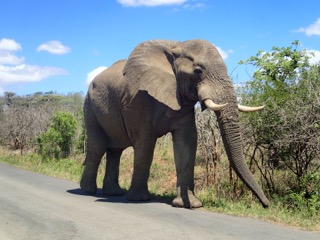   This elephant forced us off the road. The second photo is a very rare sighting of wild dogs, part of a pack of 24 (there were twenty five, but a leopard ate one last week). Then we have a Plains Zebra, nonchalantly cropping the grass. Below, a herd of zebra and a giraffe sharing the shade, and a herd of elephants at a watering hole (note the less than a week-old baby in the centre). He has to keep up with the constantly moving herd from birth, but mother is there to look after him. He couldn’t manage the slope away from the water so she took him a longer way round and pushed him up with her trunk: 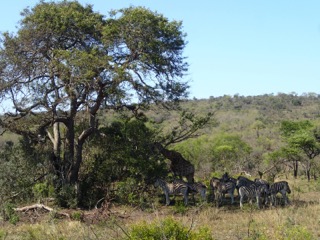  And here, white rhinos. The first photo is of two ‘teenage’ cows. Note the big wide lip - their name comes from a corruption of the Dutch for ‘fat’ or ‘wide’ and is nothing to do with their colour. The middle photo is of a week-old calf and his mother, and on the right is a large male - just look at the size of his horn. Poaching for these horns for China is a huge problem. The previous day poachers had got into the park and killed a female rhino, orphaning her calf who luckily was found and airlifted out. The poachers were engaged by wardens and one, a local man, shot dead. 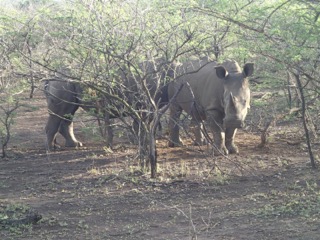   Below, impala and kudu (grey with white stripes), our Zulu guide when we went for a scary morning walk (he had to load and cock the rifle at one stage while we all walked quickly backwards), and a leopard footprint (it is nearly impossible to see a leopard): 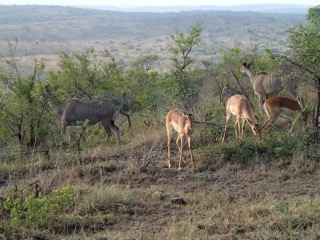 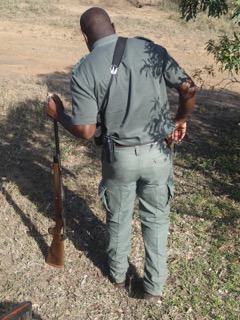  Female African buffalos with red-billed oxpecker hitching a ride (they remove parasites and keep guard). Male buffalos are the most dangerous animals in the park, and one was the reason for loading the gun.  And we’ve been to St Lucia nearby to see the wetland reserve - the biggest estuary in South Africa. on the left a Nile crocodile, and on the right a pod of hippos. These are actually the most dangerous animals in Africa, responsible for about 3000 human deaths per year. 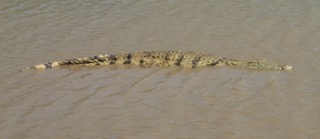  Just a few wildlife photos to get started. Sadly my good SLR camera has stopped working and we’re reliant for the time being on a compact. |